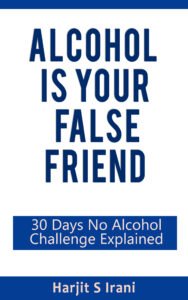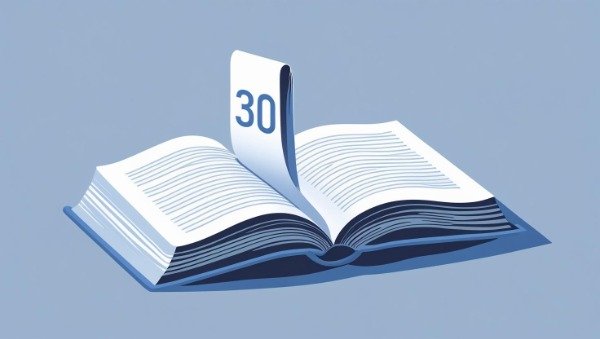How Can You Read Faster and Master Any Book
Do you often find yourself getting lost in a book, needing to reread the same page just to understand it? You may be a student trying to get through dense textbooks, a professional reviewing detailed reports, or a book enthusiast aiming to finish The Hobbit in a single weekend . Learning how can you read faster can open the door to an entirely new level of learning and enjoyment.
Slow reading not only consumes valuable time but also drains mental energy. The good news is that with the right strategies, you can significantly increase your reading speed while maintaining full comprehension.
In this comprehensive guide, you will find seven proven techniques to help you how to read fast. Learning how to become fast reader can transform the way you engage with books, academic texts, and professional material by saving time and improving focus.

Table of Contents
- Why Reading Faster Matters
- Core Techniques to How Can You Read Faster
- Eliminate Sub vocalization
- Master Chunking
- Use a Visual Guide
- Preview the Text
- Tailored Strategies for Different Texts
- Reading Novels Faster
- Speeding Through Textbooks
- Conquering Long Books
- Training to “How Can You Read Faster”
- Overcoming Speed Reading Challenges
- A 30-Day Plan to How Can You Read Faster
- Conclusion: Unleash Your Reading Speed
- Frequently Asked Questions (FAQ)
Why Reading Faster Matters
Slow reading can often feel like trudging through mud. It is frustrating, time-consuming, and mentally draining. Learning how to read faster not only saves valuable hours but also enhances productivity and allows you to enjoy more content in less time. According to a 2019 study by the University of Cambridge, the average reading speed ranges between 200 to 250 words per minute (WPM). However, with consistent practice and the right techniques, it is possible to increase that speed to 400–700 WPM.
For students, this means completing study material more efficiently and performing better in exams. For professionals, it enables quicker analysis of reports and documents. And for avid readers, it’s the difference between finishing Game of Thrones in a few days instead of several weeks. Mastering how to read faster not only gives you a competitive edge but also helps you truly enjoy and absorb every page.
Core Techniques to How Can You Read Faster
To significantly increase your reading speed, it is essential to retrain the way your brain interprets and processes written text. The following foundational strategies are designed to help you read fast and more efficiently without sacrificing comprehension.
Eliminate Subvocalization
Subvocalization is the habit of mentally pronouncing each word as you read. It limits your reading speed to the pace of spoken language, typically around 150 to 200 words per minute. To accelerate your reading, it is important to shift from vocalizing to visual word recognition.
One effective method to read faster is to hum softly or engage in light background noise to interrupt your inner voice while reading. Another is to focus on key content words—such as nouns and verbs—while skipping less meaningful fillers like “the” or “and.” For instance, when reading a complex novel, prioritize essential terms instead of processing every single word.
Start by practicing this technique for 10 minutes a day using a news article or short essay. Gradually increase your pace while maintaining comprehension. According to a 2020 study published in the Journal of Educational Psychology reducing sub vocalization can improve reading speed by up to 25%. This helps you to become a fast reader and more efficient without sacrificing your understanding.
Master Chunking
One of the most effective ways to increase reading speed is by mastering the technique of chunking. It means reading groups of words together instead of one at a time. By training your eyes to capture 3 to 5 words in a single glance, you reduce fixation points and process text more efficiently, helping you read fast.
For example, instead of reading “The hero saved the kingdom” word by word, break it into meaningful chunks such as “hero saved” and “kingdom.” This approach allows your brain to grasp ideas more quickly without losing comprehension.
To build this skill, start with short articles or blog posts and consciously expand your visual span. Focus on widening your gaze to capture more words per fixation. Tools like Spreeder or Acceleread can support this training by flashing text in phrases, helping you gradually move from two-word chunks to four-word chunks over the course of two weeks.
With consistent practice, chunking becomes second nature, helping you read books faster while maintaining clarity and flow.
Use a Visual Guide
Using a visual guide, such as your finger, a pen, or a cursor, you can significantly improve your reading pace and focus. This technique helps direct your eye movement, maintain a steady rhythm, and reduce the tendency to backtrack, which often slows readers down.
Visual guiding is especially effective when navigating dense material like textbooks or academic articles. Simply move your guide smoothly across each line, aiming for a pace of one to two seconds per line. According to a 2018 study from the University of Oxford this method can boost reading speed by up to 20% without compromising comprehension.
To get started to read fast and stay focused, try this technique while reading a novel or article. Focus on keeping a consistent, uninterrupted flow. Over time, you’ll find yourself reading faster with greater concentration and ease.
Preview the Text
Tailored Strategies for Different Texts
Different texts demand unique approaches to read fast. Novels, textbooks, and lengthy nonfiction books each require a different approach. To read faster and more effectively, it is important to adjust your strategy based on the type of text. Here is how to adapt your reading techniques to suit various formats while maintaining comprehension and speed.

Reading Novels Faster
Novels are meant to be immersive, but reading them quickly requires strategic focus. Use the techniques below to maintain both speed and enjoyment:
- Focus on Plot and Dialogue: Prioritize sections that move the story forward, such as plot developments and character interactions. Skim lengthy descriptions and scenic details, unless they contribute directly to the storyline.
- Track Key Characters: Keep a mental list of the main characters and their roles. This helps you stay oriented in the narrative and prevents unnecessary re-reading to recall who’s who.
- Set Chapter Goals: Establish reading targets, such as completing 2–3 chapters per hour. Use chunking techniques to read fast. Read in word groups rather than word-by-word. By applying these strategies, you can enjoy novels with greater efficiency, without losing the magic of the story.
Speeding Through Textbooks
Textbooks can be dense and information-heavy. To read fast, and applied with the right structure, they are manageable, and even efficient. Here is how to approach them strategically:
- Start with the Table of Contents: This gives you an overview of the book’s structure and main topics, helping you focus on what is most relevant to your goals.
- Read Introductions and Summaries First: Begin each chapter by reading the introduction, subheadings, and any end-of-chapter summaries or key points. This primes your brain to absorb essential information more efficiently.
- Use the SQ3R Method: Survey, Question, Read, Recite, and Review. This classic technique helps break down complex material into digestible parts, making to read books faster.
- Highlight and Annotate Strategically: Never underline everything. Just focus on key terms, definitions, and central arguments. Create margin notes or quick summaries to reinforce learning.
- Practice Chunking and Skimming: Combine speed reading techniques like chunking and visual scanning to move through explanatory sections quickly, especially when you are already familiar with the topic.
With a structured approach, you can speed through textbooks while retaining core concepts—ideal for exam preparation, assignments, or professional upskilling.
Conquering Long Books
Tackling lengthy books—such as War and Peace or Les Misérables—can feel overwhelming, but with the right strategies, you can make steady, efficient progress without sacrificing comprehension. Here is how to read long books faster and stay motivated:
- Divide into Manageable Sections: Break the book into smaller, digestible parts, such as 100-page segments. Aim to complete each in 1 to 2 hours, especially if you are reading at a pace of around 400 words per minute. This helps prevent burnout and keeps your momentum steady.
- Skim Non-Essential Passages: Epic novels often include extended descriptions, prologues, or philosophical digressions. Unless they are central to the plot or themes, skim these sections to save time while preserving the story’s core.
- Set Milestones and Reward Progress: Establish checkpoints—such as finishing each 100-page chunk—and reward yourself with a short break, a snack, or a moment of relaxation. These small incentives help maintain motivation and create a positive reading rhythm.
With this structured, intentional approach, even the longest books become manageable—and enjoyable to complete.
Training to How Can You Read Faster
Like any skill, speed reading improves with consistent, focused practice. With the right exercises and tools, you can steadily increase your reading pace while maintaining strong comprehension. Here are proven techniques to help you train to read faster:
- Timed Reading Sessions
Dedicate 10 minutes daily to reading a 500-word article while using a timer to measure your words-per-minute (WPM). Track your progress over time, aiming to gradually increase your speed while still understanding the material. - App-Based Speed Training
Tools like Spreeder allow you to practice by flashing text at adjustable speeds, typically between 300 and 500 WPM. Start with shorter passages, then progress to longer excerpts from books or essays as your comfort increases. - Keyword Identification
Train your brain to spot the most important words on each page. For example, in a political science article, key terms might include “democracy,” “policy,” or “governance.” Focusing on 3–5 keywords per page improves chunking and helps you grasp central ideas quickly. - Gradual Speed Progression
Begin at a comfortable pace—around 250 WPM—and work your way up to 400 WPM over four weeks. Use speed reading tools like AccelaReader to adjust the pace incrementally and challenge yourself daily to read fast.
With regular practice and the right techniques, you can develop lasting habits that improve both speed and comprehension, transforming the way you read and learn.
Overcoming Speed Reading Challenges
While speed reading offers significant benefits, it also comes with a few common obstacles. The key to long-term success is recognizing these challenges early and applying simple, effective solutions. Here is how to overcome them and continue building your reading speed with confidence:
- Distractions
External interruptions can derail focus and slow down progress. Choose a quiet, comfortable reading environment, and consider using distraction-blocking apps like Freedom or Forest to silence notifications and stay on task. - Comprehension Loss
Reading faster means you must be intentional about retention. To avoid sacrificing understanding, pause every 10 minutes to mentally summarize what you have read. This simple habit helps reinforce key points while keeping your speed in check. - Eye Fatigue
Extended reading sessions can strain your eyes, especially when training for speed. Follow the 45/5 rule: after 45 minutes of reading, take a 5-minute break. Blink regularly and look away from the page to relax your eye muscles and maintain visual clarity.
By addressing these challenges with the right strategies, you can build endurance, sharpen focus, and continue improving your speed reading skills without compromising comprehension or comfort.

A 30-Day Plan to How Can You Read Faster
Looking to become a faster reader in just one month? Follow this structured four-week plan to build your skills progressively:
- Week 1 – Focus on eliminating subvocalization with short daily reading exercises.
- Week 2 – Introduce chunking techniques using brief texts and speed reading tools.
- Week 3 – Practice using a visual guide while reading a chapter per day.
- Week 4 – Combine all techniques and apply them to a full-length to read books faster and measure progress.
With consistency and focus, this plan can help you significantly boost your reading speed in just 30 days.
Conclusion: Unleash Your Reading Speed
Mastering the art of “how can you read faster” can unlock a world of possibilities, from finishing novels in days to tackling academic and professional material with greater ease. By applying these proven techniques you can significantly boost your reading speed while maintaining comprehension and empowering you to read fast!
Start with one technique, like previewing, and build your momentum from there. With consistent practice, you will not only read faster but also retain more and enjoy the process.
Ready to take the leap? Begin today, track your progress, and let us inspire one another to read books faster and smarter.
Frequently Asked Questions (FAQ)
How can I read faster without losing comprehension?
To read faster while maintaining understanding, apply techniques like chunking and using a visual guide. Pause every 10 minutes to briefly summarize what you have read. This reinforces retention and prevents comprehension loss.
What are the most effective techniques to read fast?
Key techniques include eliminating subvocalization, mastering chunking, using a visual guide, and previewing the text before reading. These strategies work together to improve both speed and comprehension to read faster.
How do I read faster for exams like the GRE?
For standardized tests, practice skimming headings, identifying keywords, and using timed passages from GRE prep materials. This helps you read books faster while focusing on essential information.
How long does it take to become a fast reader?
With consistent daily practice, most people can significantly increase their reading speed within 30 days. Typically moving from 250 words per minute (WPM) to 400 WPM or more using structured methods.
Which apps can help train me to read faster?
Apps like Spreeder and AccelaReader use rapid serial visual presentation (RSVP) to train your eyes to process text faster. These tools help improve reading speed and track your WPM over time.
Can I read novels faster without missing the story?
Absolutely. Focus on plot and dialogue, skim lengthy descriptions, and apply chunking techniques to move quickly through the narrative without losing the storyline.
How do I prevent fatigue when reading at a faster pace?
To avoid eye strain and mental fatigue, follow the 45/5 rule: read for 45 minutes, then take a 5-minute break. Use the break to rest your eyes and reset your focus before continuing.





